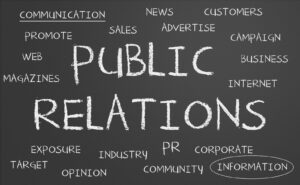Public relations is an essential part of business and it’s something you should look into as a successful PR campaign can improve your brand awareness and image, and result in increased business.
Something we find many businesses do not do, however, is measure the success of their PR and this is something that is equally as important. I explain how to measure PR below and why your business should start doing this below.
Why is it Important to Measure PR Success?
PR is not an inexpensive process. It can take huge business resources and these resources could be used elsewhere such as marketing, SEO, and product development.
Because of this resource allocation, you want a positive ROI and for the money to be spent wisely and this is why it’s essential to measure PR success.
Without measuring the success you could simply be throwing money down the drain and wasting valuable business resources. This holds true for any strategy or campaign you undertake and the process of analysis is just as important as the campaigns themselves.
PR can also be intangible and does not always lead directly to sales so there is a greater need to make it cost effective.
7 Key Metrics for Measurement in PR
PR measurement is a grey area and there isn’t a single metric that you can use to define success. Instead, it takes a combined effort utilizing an array of metrics to gain an overall understanding of the effectiveness of your PR.
1. Social media engagement
One of the simplest PR measurement metrics is social media engagement. The premise is simple – if your PR campaigns are working, your social media engagement should be increasing. By engagement, we mean a range of actions including:
- New follows and likes
- Post likes, shares, and replies
- Retweets
If you see some or all of these increasing then you are doing something right!
2. Brand Mentions
A brand mention is when something to do with your business is mentioned online. This could be your business name, a product or service you sell, a hashtag you use, or even your brand slogan for example.
An increase in brand mentions on social media, blogs, forums, and other digital outlets points towards a general boost in brand awareness and shows that your PR strategies are effective.
It is important to check the context of your brand mentions too though as the aim is for positive mentions although there is an argument stating that any mention, whether positive or negative is still beneficial.
3. Website Traffic
Another simple measurement in PR is website traffic as the ultimate aim of your PR campaigns is to boost your brand image and awareness, but also to drive sales and get new customers.
If a PR campaign was successful, you should ideally see an immediate increase in website traffic during or after the campaign is finished. There are many tools available on CMS systems and analytical platforms like Google Analytics to track website traffic and this is something a top digital PR agency can help with.
4. Share of Voice
SoV or Share of Voice helps show your authority within your industry and how “loud” you are compared to your competitors. It is a metric that shows how much content on a specific subject matter is attributed to your business.
The aim here is to have the greatest share compared to your competitors as this theoretically means that you are “heard” more and thus have more effective communication. If your SoV is too low then you know that your PR campaigns need to be bolstered and you need to shout louder!
5. Reach
Reach determines how far your PR campaigns and messages traveled and you always want a greater reach as this should translate to more interactions, brand awareness, and website traffic.
There are two categories of reach you can use to measure your PR success – social reach, and non-social reach. Social reach is easier to track as this concentrates on how far your message traveled across social media platforms like X, Facebook, and Instagram.
Non-social reach relates to anything outside of social media and this can include things like website traffic, mentions on blogs, news sites, forums, podcasts, and streaming services.
6. Sales Figures
Sales figures are typically an essential KPI in most business strategies and the same applies to PR measurement. Ultimately, while increasing your brand awareness and reputation is superb, you want your bottom line to improve and this is achieved through more sales!
While we don’t expect PR campaigns to result in ridiculous sales figures, a successful campaign should result in a boost and a steady increase in sales over time.
7. Media Content
The best PR campaigns result in brand mentions on various media outlets such as blogs, news sites, and journalist websites.
Therefore, a simple thing to measure is media content and this involves analyzing how many articles and press clippings your campaigns generated, but also the content of these articles. Ideally, the content should be positive and contribute towards the improvement of your brand image.
Measure Your PR for Continual Success and Brand Image Improvement
Any campaign you undertake for your business must be measured and reviewed. It is the only way you will improve and grow your brand. This holds true for PR campaigns and you should now have a clear idea of the different PR measurement techniques available like SoV, reach, brand mentions, and social media engagement.










